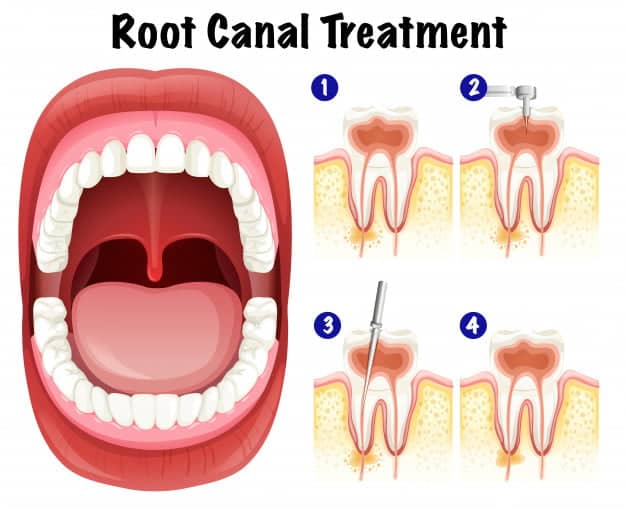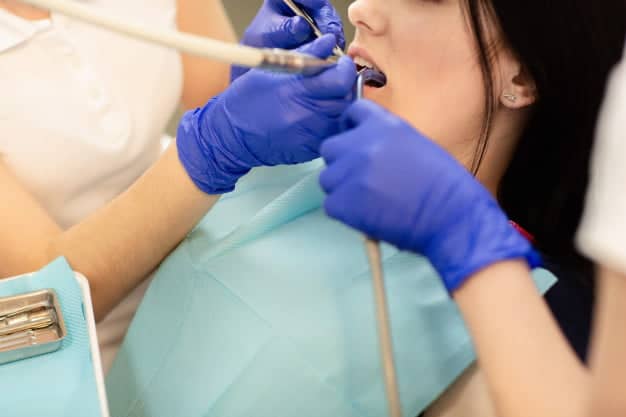It’s a dental treatment that is carried out to remove diseased, affected or infested pulp from a dental piece. The pulp of the tooth is the tissue where all the nerves and blood vessels at the root of the tooth are located.
The root serves to secure the tooth to the gums and the mandibular bone, this type of ontological treatment is performed when the tooth is damaged or infected, whether due to cavities, abscess or accidental injury.
Root canal treatment can save a tooth from which the pulp had to be removed, most patients believe that it’s a painful procedure but the truth is that no, this is only a myth, because it’s a simple procedure although a bit long it doesn’t cause major discomfort neither in the process since it’s done with anesthesia, nor in the post-treatment.

Root Canal Treatment Overview
The first step for this type of treatment is to make an opening in the crown of the tooth to be able to clean the entire pulp cavity and root canals, the second step is to fill this opening with a gummy substance, which works as a permanent dressing, and the third step, It’s done after a few days, which consists of restoring the crown of the tooth.
This type of treatment aims to:
- Relieve dental pain and discomfort.
- Stop any infection and prevent it from spreading to any other part of the body
- • Safeguard the tooth, the idea is not to extract it.
Risks or complications of root canal treatment
It’s important that you consider that this type of dental treatment has a good degree of success, if there are any complications or risks; these are usually mild and correctable:
- Sensitivity for some, but you can use a product that the dentist recommends for these cases
- Allergy reaction to anesthesia, it’s important to know if you are allergic to any of the types of anesthesia.
- Pain in the area where the treatment was performed, which disappears with the days, but you can help yourself with an over-the-counter pain reliever or one indicated by the dentist.
- It may happen that the root canal treatment doesn’t solve the problem and the tooth continues to bother and may even become infested, so it will be necessary to apply another dental procedure.

Care after root canal treatment
- It’s suggested not to consume solid foods until the effect of anesthesia has completely passed, to avoid biting your cheeks or tongue.
- Chew with the tooth until it has been fully restored.
- Brush your teeth very well two or 3 times a day
- Don’t consume excessively sugary and acidic foods
- Reduce consumption of carbonated beverages.
- Don’t bite or chew on the treated tooth until it has been fully restored
- Thoroughly brush teeth, floss and mouthwash
- Decrease alcohol consumption
- Eliminate cigarettes or tobacco.
- See the dentist periodically for cleaning and oral checkup
